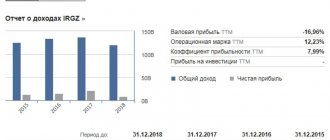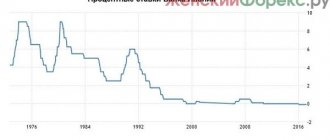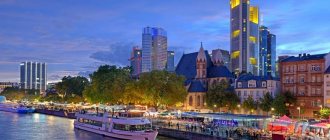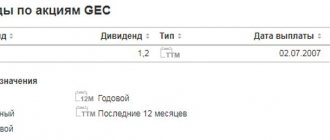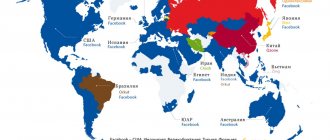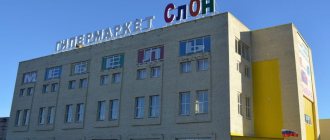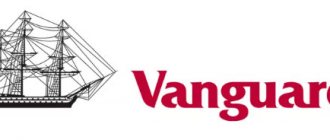What are futures?
This is a derivative or forward instrument, which represents an obligation to sell/buy something at a fixed price in a certain period of time.
Futures appeared in the 18th century, imagine a farmer who deals with wheat. To ensure a harvest, investments are required in the wheat production process: the labor of people involved in the work, seeds, fertilizers, etc., and there are no guarantees that the price of wheat will be high in the fall and it will be possible to compensate for the costs. A futures contract comes to the rescue; it can fix in advance the price at which it will sell its goods to the buyer.
Modern realities are such that futures are useful not only for the party selling the goods, but also for those who are buying. Let's imagine the company Starbucks, which buys coffee in huge quantities and the price of coffee depends on stock market dynamics. Let’s imagine that a company would change the price of a cup of coffee every month with stock price fluctuations. Therefore, the company actively uses futures contracts to fix the price of coffee.
Here are examples of futures for the raw materials coffee and wheat, there is also a futures for oil , etc. And other financial instruments can serve as underlying assets for futures. There are futures for currency pairs (dollar-ruble), for shares (Sberbank), index ( RTS futures ).
What kind of gas is sold on the stock exchange?
In addition to regular natural gas, liquefied natural gas (LNG) is traded. It is more expensive than usual due to the cost of liquefying it and then bringing it into a gaseous state. Thanks to the technology of converting it into a liquid state, it can be delivered to hard-to-reach areas, to remote settlements without laying pipelines.
LNG is also supplied to the islands. For example, the United States supplies it to Japan by tankers.
Shale gas is a separate commodity item. American companies actively promote it on the stock exchange.
Futures vs. Stock
What is the difference between futures and stocks? Let's look at the most important differences:
- No dividends. There are payments for stocks, but there are none for futures.
- You can hold a stock as long as you want, futures until the expiration date. On this date, settlements between counterparties are made with each other.
- When we buy a share in a brokerage account, the amount must be 100% of the lot price. If you need to buy futures on a share, you don’t need the full amount, you need the amount of the guarantee, on the Moscow Exchange it’s 10-20%.
- When we buy a stock, we see the profit on it when we close the deal. In futures, profit is visible every day - this is variation margin, it is credited to the account and can be used for further transactions.
- Margin Call. When you bought a share, and even when the price of this share drops to zero, you can hold the share and wait for it to rise. If we work with futures, the situation is different. When there are fewer funds in the account, which constitute the collateral, the broker can close the margin call transaction. Thus, the investor loses money.
Forecast
Over the past few months, the price of natural gas has fallen quite significantly. From November last year to April this year, methane fell in price on the NYMEX by almost half. Currently, prices are at a three-year low.
Many analysts believe that the price may fall further. This is associated with an excess supply of liquefied gas. New facilities for liquefying extracted fuel are expected to be commissioned in the Middle East, USA and Australia.
General characteristics and features of the underlying asset
World natural gas reserves, according to experts, amount to approximately 300 trillion cubic meters. The huge volume! Natural gas is a fairly cheap type of fuel. It is used in industry and in everyday life, and is environmentally friendly because it does not emit toxic substances or soot during combustion. It is also a valuable chemical raw material for the production of plastics.
Analysis and influencing factors
As you know, the price of a product is determined by the balance of supply and demand. The main factor influencing supply is production volume. Over the past 3 years, methane production in the United States has increased 4 times.
Gas consumption is also growing. The main consumers are households and industry. However, in the last few years, consumption growth has decreased. Seasonality significantly affects demand, as well as prices for other types of fuel, such as coal or fuel oil. The construction of new gas pipelines expands sales markets. The phasing out of nuclear power plants also contributes to an increase in natural gas consumption.
Futures speculation (trading)
There are shares of Gazprom, which are traded on the stock market of the Moscow Exchange; the price of 1 share is 230 rubles. If you need to buy 100 shares = 23 thousand rubles. We know that you can go to the derivatives market, where you can buy futures of Gazprom shares. 1 futures on shares 23 thousand rubles, guarantee collateral 4 thousand (20% of the price). With little money you can buy a large volume of shares. This is precisely why traders come to the derivatives market. If shares on the stock market have increased the yield is about 5%, if on the futures market it can reach up to 30%.
The leverage effect is a great tool if the price of an asset goes in the desired direction for the participant. You can earn more, but if the price starts moving down, it won't be sweet. Since you can sit out a drawdown with stocks, and a margin call can happen in the futures market, there will be large losses, or you need to have the entire amount on your balance sheet for insurance.
Advantages and disadvantages of this futures
Natural gas futures on the NYMEX are used by wholesale methane producers and consumers as a price benchmark and a tool for hedging price risks - insurance against losses in the event of unfavorable price movements. Because futures are deliverable, they are closely linked to the spot market. This allows you to avoid price slippage when concluding transactions.
Trading on this contract takes place 24 hours with an hour break, six days a week. Therefore, there is much less risk of an unexpected price gap between the opening and closing prices of trading, as happens in the stock market.
The disadvantage is that access to natural gas futures trading in the Russian Federation can only be obtained through a foreign broker or a subsidiary of a Russian company. Yes, and this service is only for qualified investors.
Delivery vs. Settlement futures
Deliverable futures relate to the real economy. If you are a holder of such a futures contract on the expiration date, you must take actual action.
Settlement ones are not so strict and scary, they are more popular in the modern market, there are even weather futures. Here, on the expiration date, calculations are made, there is no delivery date, the user simply receives a profit or loses it.
On the Moscow Exchange, most futures are settlement, with the exception of futures on shares and bonds, for which real delivery of instruments is carried out on the balance sheet.
There are most often several futures for one instrument, with different expiration dates. Most expire in fixed months, most often March, June, September, December. The last trading day in most cases is the 15th.
Parameters and designation
| Platform (exchange) | NYMEX is part of the Chicago Mercantile Exchange CME group. |
| Name | Henry Hub Natural Gas Futures |
| Execution method | Real delivery. Carried out through the Henry Hub gas distribution terminal in Louisiana. |
| Stock symbol (ticker) | NG Each month of the year has a letter designation: F - January, G - February, H - March, J - April, K - May, M - June, N - July, Q - August, U - September, V - October, X - November, Z - December. For example: NGM9 means the Henry Hub Natural Gas Futures contract for delivery in June 2021 (the number in the designation is the year of delivery). |
| Expiration date | There are contracts with all delivery months. Contract trading ends three business days before the delivery month. |
Strictly speaking, the underlying asset of a natural gas futures contract is the heat that is released when gas is burned. The unit of measurement is 1 million British thermal units (mmBTU). The size of one contract is 10,000 mmBTU.
The minimum price change step (one tick) is one tenth of a cent. Therefore, a price change of one tick is $10 per futures.
Contango and backwardation
Please note that the market price of a stock may differ from the price on the futures market. This happens if the market expects that the price of an asset will rise in the future, and then the future will be more expensive than today - this is the contango effect. When, on the contrary, the market believes that over a longer horizon the price will be cheaper than now, the futures are traded cheaper - this is backwardation.
Example: Gazprom futures. There are three active contracts on the market with expirations in June, September and December. At the same time, June is trading at the current price level, while autumn and winter are trading cheaper.
Analytics and cost forecast
Considering that American companies are diligently striving to occupy a niche in LNG supplies to Europe, fuel supplied from Russia will not become significantly more expensive. However, artificially reduced oil prices have been undermining the economies of all oil-exporting countries for quite some time.
Judging by the chart from NYMEX, an artificial collapse has occurred since December last year. At that time, NG quotes were close to 4,492 Btu.
Then there was a rapid price decline until mid-April, after which NG traded in the 2,263–2,700 Btu range until mid-October. The approach of cold weather has noticeably pushed up the price; today it is 2,633 Btu, and a tendency for further growth is visible.
How to read the futures name?
This question is especially popular among beginners because it can be difficult to read. Everything is quite simple. Let's look at the example of the dollar-ruble pair. This futures has the full name:
- full Si-6.19 − S is the identifier of the underlying asset, indicating that this is a dollar-ruble futures, 6 is the expiration month, 19 is the expiration year
- short SiM9 - M is the designation for June, 9 is a truncated designation for the month.
Transcript data is available on the Moscow Exchange website. On the Russian market, futures can be traded on the Moscow Exchange; if we talk about global exchanges, this is the Chicago Exchange.
Futures do offer advanced opportunities, but be aware of the risks involved. Initially, it is better to work on the stock market, the regular market, after which you can move on to the futures market. Try futures first, then you can move on to options. To figure out how to work in this market, how to predict quotes, pay attention to John Murphy’s book “Technical Analysis of Futures Markets”; the methods described by the author can be applied to other markets.
NG is a new futures contract for Natural Gas.
NG is a new futures contract for Natural Gas. Since a futures is a derivative instrument, let’s first figure out what the underlying asset itself is, “Natural Gas”. What exactly is “natural gas”? Natural gas is a large accumulation of gases that arise in the bowels of the Earth during the anaerobic decomposition of organic substances.
Application.
The areas of application of natural gas (most of which is methane: 92-98%) are quite wide, namely: as a fuel in residential buildings for heating and cooking; in the form of fuel for various vehicles, boiler houses, thermal power plants, and various equipment. Also, the use of natural gas is widespread in the chemical industry. industry as raw materials for the production of various substances necessary for humans, such as plastics.
Extraction.
Natural gas is produced by flowing wells. With the help of geological exploration, it is established where exactly the deposits are located, and the process of gas production is launched - extraction from the subsoil, collection and transportation.
- has the richest natural gas reserves in the world. In world reserves it amounts to 16%, in Russian reserves - 71%.
Thus, natural gas is a substance that we come across all the time - when lighting a cigarette, lighting a burner or refueling a car (if you are a Gazelle driver and for some reason you feel like reading about a new futures contract on the Moscow Exchange).
Futures NG - for Natural gas.
Now let's move directly to natural gas futures.
Futures were put into circulation on February 3, 2021 in the derivatives section of the Moscow Exchange. The basic parameters of the tool are as follows:
| Full futures name: | Futures contract NG-3.20 |
| Futures ticker | NGH0 |
| Max shoulder | 5 |
| Plank on top | 2.052 |
| Bottom plank | 1.692 |
| Price step | 0.001 |
The new futures have 7 expiration dates from March to September 2020.
The strike price is the Henry Hub natural gas futures price. This contract is traded on the CME (Chicago Mercantile Exchange) and is an international benchmark for the price of natural gas and ranks third in liquidity among commodity futures. The lot (underlying asset) of the natural gas futures put into circulation is equal to 100 MMBtu - this is 100 million British thermal units. Managing Director for Money and Derivatives Markets of the Moscow Exchange commented on the introduction of the new contract:
“Commodity derivatives are the most dynamically growing segment of the Moscow Exchange derivatives market; in 2021, the volume of trading in commodity derivatives grew by more than 30% and amounted to 28 trillion rubles. The start of trading in gas derivatives is part of our strategy to expand Russian investors’ access to international benchmarks.”
In addition to Natural Gas futures
Whether the new futures for Natural Gas will be able to compete with the most liquid futures for Brent oil at the moment - time will tell.
Technical analysis.
The following picture appears on the daily time frame. A likely decline to the level of 1.611 will continue with an upward correction to the level of 2.001.
On the longer-term TF-monthly chart, one can see the prerequisites for the continuation of the bearish trend towards the level of 1.000, followed by a correction to the historical resistance level of 2.530.
Indicators.
The MACD indicator shows a clear bullish divergence, which may indicate a likely upward trend reversal. (You can read more here.)
The moving average shows a strong deviation on the daily chart from the average price value over the last 200 days.
Fundamental analysis.
Despite the cold winter in the United States, the price of natural gas futures fell by 16% over the two winter months.
Considering that meteorologists predict a warm spring with a high probability of a warm one, one should not expect a quick increase. In these circumstances, a correction to the above-mentioned level of 1.611 is most likely. Meteorologist Bret Walts of BAMWX: “At this time, we do not see strong signals to support continued cold weather and expect warmer weather in the eastern U.S. to continue through mid-February. Some areas in the southeastern United States and Ohio Valley will get a nice taste of spring early next week as temperatures could climb into the 60s and 70s Fahrenheit!
U.S. gas production also fell last week from recent record highs, averaging just 94.1 billion cubic meters, according to estimates. ft/d in the lower 48 states, up from 94.6 bcf/d. ft. a week earlier. Despite colder weather, higher gas consumption and production cuts, the total amount of gas remaining in storage last week was still estimated to be above last year's level and the five-year average. According to estimates, if the Authority reports the market expected production of 195 billion cubic meters. feet, total gas reserves will remain at 2.752 trillion cubic meters. ft. That's 7.8% higher than the five-year average and 23.9% higher than the same week a year earlier.
In general, analysts' forecasts tend to continue the bearish trend and even update historical lows. Wait and see.
Personally, I am inclined to go long (without leverage) from the level of 1.611.
hurry fo smart lab competition from PROSTGUIDE.RU
PS If the post gets +50 , I’ll buy “Strong Hunting” and drink to your health.
